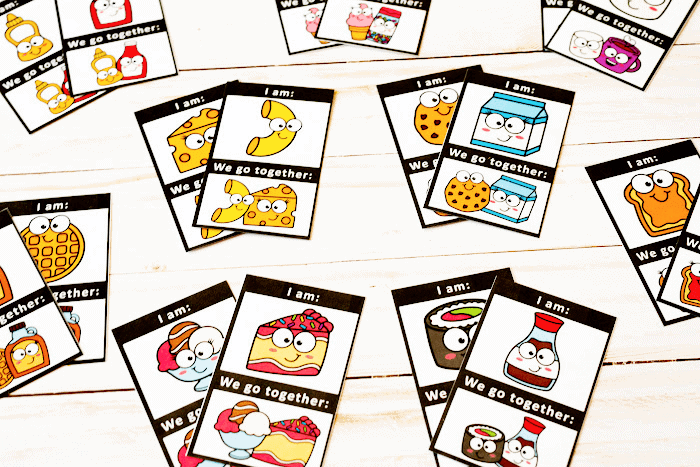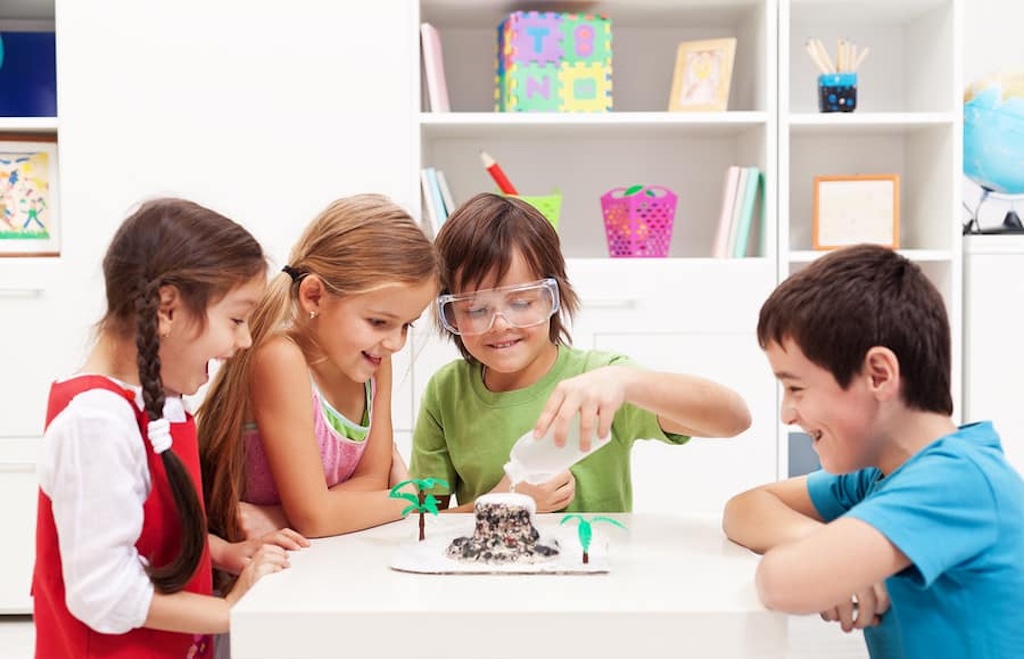I’m a firm believer in group work. It is a highly effective learning strategy when done correctly. In addition to supporting students academically, it also builds students’ social skills, problem-solving skills and a strong classroom culture around accepting and valuing everyone. However, I often see teachers grouping their students the same way every time. Whether they group them by ability groups, or table arrangements or let the students choose who they work with. In the end, students always seem to be working with the same people. When this is the case you loose many of the benefits of group work. So, I suggest mixing it up. Maybe for one lesson students work in their table groups, maybe another lesson they get to choose a partner and maybe at the end of the day you do random grouping. When students understand that their group is just temporary and they will get a chance to work with others at a different time, they won’t complain so much about it.
Let’s break down the benefits from randomly forming student groups.
Promotes Inclusivity and Social Skills
Random grouping fosters an inclusive environment where students have the opportunity to interact with peers they may not typically engage with. This helps break down social barriers and cliques, encouraging a sense of community. When students work with different classmates, they learn to appreciate diverse perspectives and develop crucial social skills, such as communication, empathy, and teamwork. These experiences can be particularly beneficial for students who may feel isolated or anxious in social situations, as they’re given a chance to connect with others in a structured setting.
Enhances Collaboration and Problem-Solving
When students are randomly grouped, they are often placed in situations that require them to collaborate with peers who have varying strengths and weaknesses. This diversity can lead to richer discussions and more creative problem-solving. Students take on different roles in different groups. For example, a student who is quieter when with one set of peers, may take on a leader role when in a different group. Random grouping encourages students to think critically and approach problems from multiple angles, leading to deeper understanding and retention of the material.
Reduces Anxiety
For many students, group work can be a source of anxiety. If they always get put in a group with someone that they don’t get a long with, they may start to dread group work. Higher and lower-achieving students sometimes also develop anxiety in groups. If you tend to form groups where there is one high- achieving student and you hope that high-achiever can lead the group and help their peers, that becomes a lot of pressure for those high-achieving students. Group work is no longer fun and challenging to them, it puts them in a teacher role and not all students want to be in that role.
When students know that they will be working with different partners for each activity, they may feel less anxious about being judged or evaluated based on their usual performance. This unpredictability can make group work feel more like a fun challenge rather than a high-stakes situation. As a result, students are more likely to engage fully in the learning process, share their ideas, and take risks without the fear of failure.
Boots Engagement
As I mentioned earlier, one when students get put in different groups sometimes they will take on different roles depending on the strengths and weaknesses of the other group members. Changing up groups means that students won’t just fall into a pattern of always doing the same role.
What often happens when you place students in the same mixed ability group a lot is that the the lower-achieving students usually discover that they are the lower-achieving student in the group. They lower their expectations of themselves because they know someone is there to help and carry the weight of the group for them. The same can happen with quieter students, regardless of their academic abilities. These students know who the “leader” of the group is everyday and they sit back and let that other student do most of the work and contribute most of the ideas. Randomly selecting groups, breaks students out of the box they think they are in and pushes them to take on new roles therefore participating in the group in a deeper, more meaningful way.
Ways to Form Random Groups
When you allow the students to see you randomly forming the groups, it builds trust so they know the groups truly are random. So, however you decide to randomly form the groups, do it when students are present not beforehand.
Spinner
I love using the Flippity name picker to randomly form groups. Fill in the names of your students just like you are going to create a spinner. Then after generating the spinner you’ll see different tabs at the top of the screen. The different tabs allow you to group students in 2, 3, 4 or 5s. You can also create a seating chart by clicking a tab.

Popsicle Sticks
If you already have a set of popsicle sticks with students’ names on them then this is an easy tool to use. Grab a few sticks and call out those names to form a group.
Playing Cards
This works great for older students. Beforehand select the number of cards you need for the number of students you have, then let each student pick a card. Have them form groups either by numbers or suits.
Partner Cards
Finally, if you want to partner students randomly you can find a tone of free partner cards based on different themes like these food cards from Life over C’s

Incorporating random grouping into classroom activities can lead to a more vibrant, inclusive, and productive learning environment. As educators look for ways to engage their students and foster a sense of community, random grouping is a simple yet powerful strategy worth embracing. So, why not give it a try in your next lesson? The benefits may surprise you!
Other Posts You Might Like:



